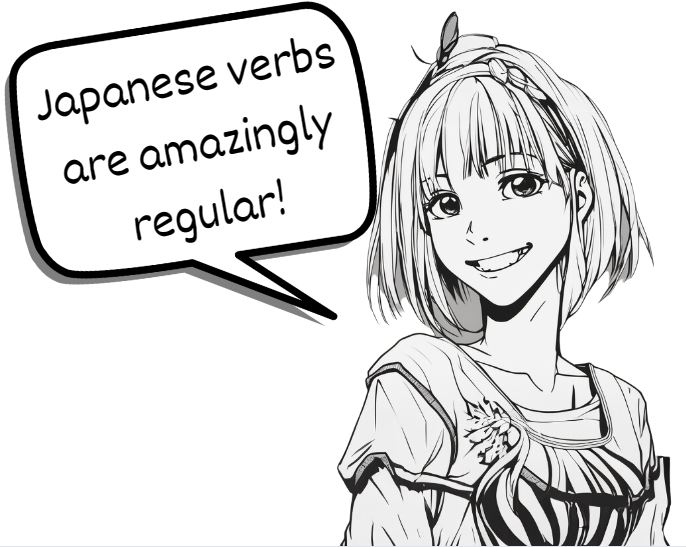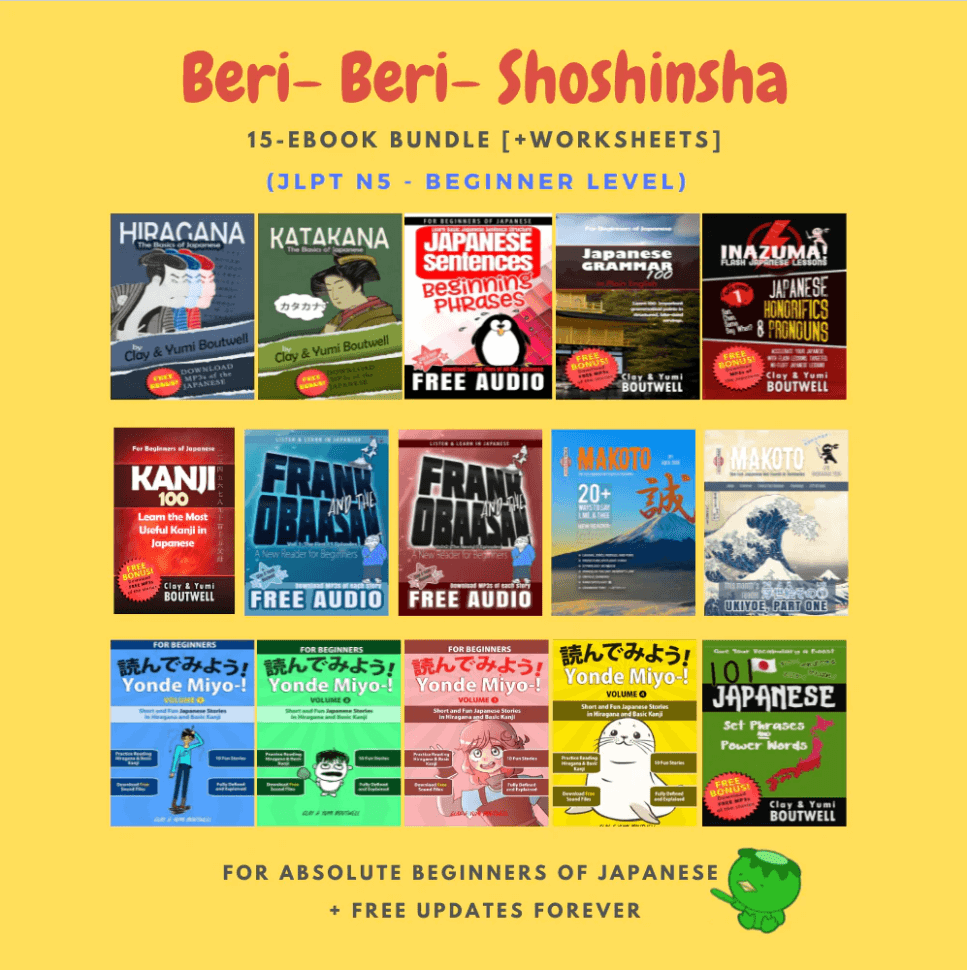Japanese Verbs
The simple past form is also known as the た form since, well, all verbs end with た (except a few that end in だ, but those are pretty easy to pick up). This form is occasionally used for other purposes making it extremely important for the beginner to learn.
Japanese verbs fall into three groups:
- Group 1 (also known as "u-verbs" or "godan verbs" or otherwise known as “the hardest group!”),
- Group 2 (also known as "ru-verbs" or "ichidan verbs" or otherwise known as “the pretty easy group!”), and
- Group 3 (also known as "irregular verbs" or otherwise known as “I just have to memorize them group”).
Each group has a different way to construct the simple past た form, but the good news is it’s the same as constructing the て form for all verbs. In other words, once you form the past, you can just change the た to a て and the だ to a で. If you want to learn more about the て form, see the lesson page here.

Group 1: U-verbs or Godan verbs
These are verbs that end with a “u”-sound syllable in their dictionary form, except those ending in “iru” or “eru” which are generally Group 2 verbs.
Group 1 verbs are the trickiest. If memorizing fairly complex grammar rules isn’t your thing, don’t worry. You’ll eventually get the hang of it as you learn words and phrases. However, I would still recommend going through the following rules and at least begin familiarizing yourself with the forms.
To convert a Group 1 verb to its ta-form, follow the following rules depending on the verb ending:
■ If the verb ends with 'u', 'tsu', or 'ru', replace it with った.
For example:
- 待つ (matsu, to wait) becomes 待った matta
- 帰る (kaeru, to return home) becomes 帰った kaetta
■ If the verb ends with 'mu', 'bu', or 'nu', replace it with んだ.
For example:
- 飲む (nomu, to drink) becomes 飲んだ
- 遊ぶ (asobu, to play) becomes 遊んだ
- 死ぬ (shinu, to die) becomes 死んだ
■ If the verb ends with 'ku', replace it with いた.
For example:
- 聞く (kiku, to listen) becomes 聞いた
- 書く (kaku, to write) becomes 書いた
■ If the verb ends with 'gu', replace it with いだ. (Note, this is similar to the above verbs ending in く, but since it is ぐ, the result is a だ and not た.
For example:
- 泳ぐ (oyogu, to swim) becomes 泳いだ
■ If the verb ends with 'su', replace it with した.
For example:
- 話す (hanasu, to speak) becomes 話した
Group 2: Ru-verbs
These are (much easier) verbs that end with 'iru' or 'eru'. To convert a Group 2 verb to its ta-form, simply drop the "る" at the end of the verb and add "た".
For example:
- 食べる (taberu, to eat) becomes 食べた
- 見る (miru, to see) becomes 見た
That’s it for Group 2 verbs!
Group 3: Irregular Verbs
There are only two irregular verbs in modern Japanese: する (to do) and 来る (to come). Their ta-forms are irregular and simply need to be memorized.
- する (to do) becomes した (Notice it goes from a “su” to a “shi” when conjugated)
- 来る (to come) becomes 来た (Notice it goes from a “ku” to a “ki” when conjugated)





